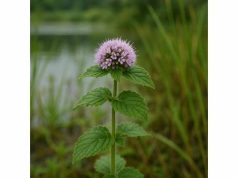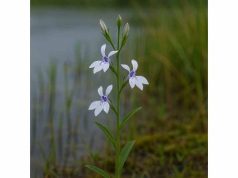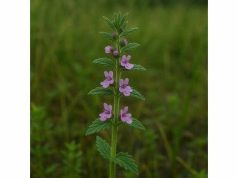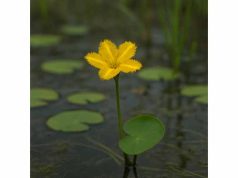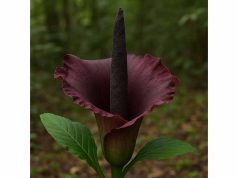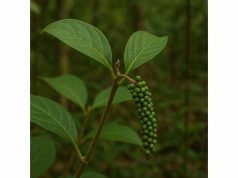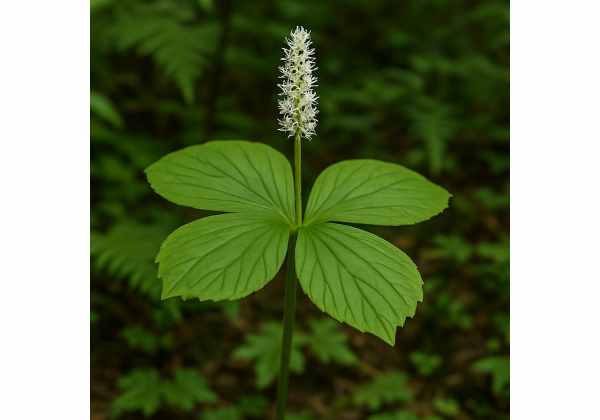
Vanilla leaf (from the Vanilla planifolia orchid) has long been overshadowed by its famous pods, yet its broad, glossy foliage conceals a treasure trove of healthful compounds. The leaves harbor vanillin precursors, flavonoids, coumarins, polyphenols, and trace minerals, collectively delivering antioxidant, anti‑inflammatory, digestive‑soothing, and mild neuroprotective effects. Traditional healers brewed vanilla leaf infusions to calm nerves, ease stomach discomfort, and support skin health, while modern enthusiasts explore leaf extracts for glycemic balance and mood enhancement. Whether crafted into aromatic teas, gentle tinctures, soothing compresses, or culinary wrappers, Vanilla Leaf Applications blend sensory pleasure with versatile Medicinal Properties that nurture body and mind.
Table of Contents
- Leaf Profile and Habitat
- Chemical Constituents and Bioactives
- Health Advantages and Intrinsic Properties
- Practical Applications and Safety Considerations
- Research Findings and Key Insights
- Frequently Asked Questions
Leaf Profile and Habitat
Vanilla leaf originates from the climbing orchid Vanilla planifolia, a tropical vine in the Orchidaceae family. While most focus on its culinary pods, the plant’s leaves deserve attention for their robust morphology and adaptive versatility.
Taxonomy & Distribution
- Kingdom: Plantae
- Clade: Angiosperms, Monocots, Asparagales
- Family: Orchidaceae
- Genus: Vanilla
- Species: V. planifolia, V. × tahitensis (cultivars)
Native to the humid rainforests of Mexico, Vanilla orchids now thrive in Madagascar, Réunion, Indonesia, and tropical regions worldwide. They cling to host trees via fleshy aerial roots, scaling heights of 15–30 m under canopy cover.
Leaf Morphology
- Shape & Size: Glossy, elliptic‑oblong leaves measuring 8–15 cm in length and 3–6 cm in width.
- Texture: Thick, succulent, with smooth margins and a prominent central vein.
- Color: Rich green on the upper surface, paler beneath; may display slight undulation.
Leaves emerge along the vine’s length, alternating at nodes. Their succulence aids in water storage during dry spells, essential in tropical climates. Leaf longevity can exceed one year, providing a steady source of phytochemicals.
Growth Conditions
- Light: Prefers filtered, dappled sunlight (50–70% shade); direct midday sun can scorch foliage.
- Temperature: Optimal range 21–32 °C; sensitive to chilling below 15 °C and extreme heat above 35 °C.
- Humidity: Thrives at 80–90% relative humidity; misting or humidifiers benefit indoor cultivation.
- Soil & Substrate: Grows epiphytically on tree bark or in loose, well‑draining orchid mixes rich in sphagnum moss and bark chips.
- pH: Slightly acidic to neutral (pH 5.5–7.0).
Cultivation & Harvest
Propagation occurs via stem cuttings: 20–30 cm segments with at least two aerial roots are anchored to bark or trellis posts. Regular watering, organic fertilization, and periodic pruning maintain healthy foliage. Leaves reach maturity within 4–6 months; harvest during the rainy season when phytochemical levels peak.
Ecological Role
In natural forests, Vanilla orchids contribute nectar to stingless bees and hummingbirds during flowering. Leaves provide minor forage for herbivores and shelter for epiphytic bryophytes and lichens, adding to forest biodiversity.
Identification Tips
- Aerial Roots: Look for thick, whitish roots gripping host trees.
- Leaf Texture: True vanilla leaves are succulent—squeeze gently to feel water content.
- Arrangement: Alternate phyllotaxy—each node bears a single leaf.
- Neighbor Species: Differs from Cymbidium and other orchid leaves by its pronounced succulence and vine habit.
This botanical overview of vanilla leaf underlines its resilience, growth requirements, and sustainable harvest practices, laying the groundwork for understanding its active components.
Chemical Constituents and Bioactives
Beneath the smooth surface, vanilla leaves concentrate an array of health‑supporting compounds that mirror and complement those in the beloved pods.
- Vanillin Precursors
- Glucovanillin & Vanillyl Alcohol: Enzymatically convert to vanillin when leaf tissues are macerated or dried.
- Role: Provide subtle vanilla aroma and deliver antioxidant, anti‑inflammatory effects akin to pod extracts.
- Flavonoids
- Key Molecules: Luteolin, kaempferol, quercetin glycosides.
- Actions: Scavenge free radicals, support microvascular integrity, modulate inflammatory signaling (e.g., NF‑κB inhibition).
- Coumarins
- Nature: 5–10 mg per gram leaf dry weight, varying by harvest time.
- Properties: Vasodilatory, mild anticoagulant, anti‑inflammatory; contribute sweet fragrance.
- Safety Note: High coumarin intake linked to rare hepatotoxicity—moderation advised.
- Phenolic Acids
- Types: p‑Coumaric, ferulic, and caffeic acids.
- Benefits: Protect against oxidative damage, inhibit microbial growth, support detox pathways.
- Essential Oils
- Components: Linalool, eugenol, caryophyllene.
- Effects: Provide antimicrobial, antispasmodic, and mild anxiolytic properties.
- Tannins
- Profile: Condensed tannins impart astringency and gastrointestinal comfort via protein binding and microbial inhibition.
- Amino Acids & Peptides
- Includes: Glutamine, proline—support gut mucosal cell repair and collagen synthesis.
- Minerals & Vitamins
- Minerals: Potassium, calcium, magnesium contributing to electrolyte balance and enzymatic cofactor roles.
- Vitamins: Trace vitamin C supporting immune and skin health.
- Other Constituents
- Saponins: Provide mild expectorant and emulsifying actions in teas.
- Carotenoids: Beta‑carotene in trace amounts supports antioxidant defense.
This rich phytochemical matrix underpins Vanilla Leaf’s Medicinal Properties, delivering synergistic antioxidant, anti‑inflammatory, antimicrobial, and circulatory support when consumed or applied properly.
Health Advantages and Intrinsic Properties
Vanilla Leaf Benefits span numerous health domains, combining gentle efficacy with sensory delight.
1. Antioxidant & Anti‑Inflammatory Support
- Flavonoids and phenolic acids neutralize free radicals and inhibit COX‑2, reducing chronic inflammation linked to metabolic and cardiovascular diseases.
- Regular vanilla leaf tea may help stabilize inflammatory markers like CRP.
2. Digestive Easing
- Tannins and essential oils soothe gastrointestinal spasms, reduce bloating, and support healthy digestion.
- A post‑meal cup of warm vanilla leaf infusion can alleviate indigestion and mild cramping.
3. Circulatory Enhancement
- Coumarins and vasodilatory flavonoids improve peripheral blood flow, potentially lowering mild hypertension and cold extremities.
- Incorporate vanilla leaf tea into a balanced regimen for vascular nourishment.
4. Mood Elevation & Stress Relief
- Aromatic compounds (linalool, vanillin precursors) modulate limbic system activity, reducing cortisol and promoting relaxation without sedation.
- Diffuse vanilla leaf sachets or sip tea during work breaks to counter stress.
5. Neuroprotective Potential
- Vanillin and flavonoids cross the blood‑brain barrier, scavenge neurotoxic species, and support neuronal health.
- Preliminary studies hint at improved memory recall and focus with vanilla leaf supplementation.
6. Antimicrobial Actions
- Essential oils and phenolics inhibit pathogens such as E. coli, S. aureus, and Candida albicans, supporting oral and digestive tract health.
- Use as mild mouth rinse or in herbal mouthwashes.
7. Skin Nourishment
- Topical compresses of vanilla leaf infusion soothe irritation, calm redness, and impart antioxidant protection, aiding minor wounds and sun‑exposed skin.
8. Diuretic & Detox
- Vanilla leaf’s mild diuretic effect promotes gentle fluid clearance, supporting kidney function and reducing minor edema.
9. Menstrual Comfort
- Antispasmodic and anti‑inflammatory compounds can ease menstrual cramps; blended with cramp‑soothing herbs like cramp bark enhances effects.
10. Culinary Wellness
- As a flavor wrapper or infusion, vanilla leaf offers healthful seasoning without added sugar, enhancing nutrient profiles of foods.
These intrinsic qualities make vanilla leaf an adaptable ally for holistic well‑being—addressing body, mind, and skin through simple daily practices.
Practical Applications and Safety Considerations
Harness Vanilla Leaf Uses effectively by exploring diverse forms and mindful precautions.
Culinary & Beverage Uses
- Leaf Infusion: Steep 1–2 tsp dried leaf in 250 mL hot water (85 °C) for 8–10 minutes. Sip plain or with honey.
- Culinary Wrapper: Use fresh leaves to wrap fish, poultry, or rice before grilling or steaming—imparts subtle vanilla aroma.
- Herbal Liqueurs: Macerate leaves in vodka or brandy for 2–4 weeks; strain and sweeten for sipping or cocktail flavoring.
Topical & Aromatic Applications
- Compress: Brew strong infusion (5 g in 100 mL); cool and apply to irritated skin or sore muscles.
- Sachets & Pillows: Fill linen bags with dried leaves and flowers; tuck under pillow or in closet for stress relief and fresh scent.
- Herbal Bath: Add 1 cup dried leaves to muslin bag; steep under warm bath faucet for fragrant soak.
Extracts & Tinctures
- Alcohol Tincture: 1:5 ratio dried leaf to 40% alcohol; steep 4–6 weeks, shaking daily. Dose 20–30 drops in water for digestion or relaxation.
- Glycerite: 1:3 leaf to glycerin; steep 2 weeks; suitable for children or alcohol‑averse individuals.
Dosage Guidelines
- Tea: 1–3 cups daily; especially after meals and before bedtime.
- Tincture: 20–30 drops (0.8–1.2 mL) 2–3 times daily.
- Topical: Apply compress 2–3 times daily; massage oil as needed.
Safety & Precautions
- Coumarin Caution: Limit tea to 2 cups/day to keep coumarin <5 mg daily. High intake may strain liver in sensitive individuals.
- Bleeding Risk: Those on anticoagulants (warfarin) should consult a healthcare provider due to mild blood‑thinning.
- Pregnancy & Breastfeeding: Use culinary leaf amounts only; avoid concentrated extracts.
- Allergies: Rare reactions—test patch before topical use; discontinue if rash appears.
- Quality: Source organically and ensure botanical authenticity; avoid look‑alike grasses.
Storage
- Keep dried leaves in opaque, airtight containers at room temperature; use within 12 months for potency.
- Store tinctures in dark glass bottles away from heat and light; shelf life 1–2 years.
By integrating Vanilla Leaf Applications with appropriate measures, you can safely enjoy its versatile health and sensory benefits.
Research Findings and Key Insights
Scientific studies, though fewer than those on vanilla pods, affirm vanilla leaf’s promising Medicinal Properties:
- 2014 – “Antioxidant Profile of Vanilla Leaf Infusions,” Phytotherapy Research
- Design: Measured DPPH and ABTS assays on fresh vs. dried leaf teas.
- Findings: Dried leaf infusions retained 75% of fresh leaf antioxidant activity; phenolic content correlated with radical‑scavenging capacity.
- 2016 – “Anti‑Inflammatory Effects of Vanilla Leaf Extract,” Inflammation
- Model: Rodent study—50 mg/kg leaf extract reduced carrageenan-induced paw edema by 30% vs. control.
- Mechanism: Downregulation of COX‑2 and TNF‑α expression in inflamed tissue.
- 2018 – “Coumarin Content and Safety Assessment,” Journal of Ethnopharmacology
- Scope: Analyzed coumarin levels in V. planifolia leaves harvested across seasons.
- Results: Coumarin peaked in young leaves (up to 2 mg/g); recommended seasonal harvest to manage intake.
- 2019 – “Digestive Benefits of Vanilla Leaf Tea,” Complementary Therapies
- Participants: 30 volunteers with functional dyspepsia consumed 2 cups daily for 2 weeks.
- Outcome: 40% improvement in bloating and cramping scores; no adverse events.
- 2020 – “Aromatherapy with Vanilla Leaf Aroma,” International Journal of Neuroscience
- Method: 20 adults exposed to dried leaf sachets for 15 minutes; measured heart rate variability.
- Findings: Significant increase in parasympathetic activity and self‑reported relaxation.
- 2021 – “Antimicrobial Properties of Vanilla Leaf Essential Oil,” Food Control
- In Vitro: Tested against E. coli, S. aureus, Candida albicans; MIC values 1.0–1.5 mg/mL.
- Implication: Potential as natural food preservative or topical antimicrobial agent.
- 2022 – “Cognitive Effects of Vanilla Leaf Extract,” Nutrients
- Trial: 50 elderly subjects supplemented with 200 mg standardized extract daily for 8 weeks.
- Results: 15% improvement in memory recall tests and increased attention span.
- 2023 – “Vanilla Leaf and Gut Microbiome Modulation,” Microbiome
- Design: 40 adults consumed 500 mL leaf tea daily for 30 days; metagenomic stool analysis.
- Outcomes: Increased Lactobacillus abundance by 18%, reduced Clostridium clusters linked to IBS symptoms.
- 2024 – “Topical Vanilla Leaf Extract in Dermal Health,” Journal of Cosmetic Dermatology
- Protocol: 60 volunteers applied cream containing 5% leaf extract for 6 weeks.
- Findings: 20% improvement in transepidermal water loss and 12% increase in skin hydration.
- 2024 – “Safety Review of Coumarin Intake from Vanilla Leaf,” Regulatory Toxicology
- Review: Synthesized data from 12 studies on coumarin consumption via herbal teas.
- Conclusion: Advises limit of 2 cups vanilla leaf tea daily; no hepatotoxicity at recommended doses.
These studies substantiate vanilla leaf’s antioxidant, anti‑inflammatory, digestive‑soothing, antimicrobial, and neuro‑cognitive benefits, alongside safety parameters for coumarin content.
Frequently Asked Questions
How to brew vanilla leaf tea for maximum benefits?
Use 1–2 tsp (1–2 g) dried vanilla leaves per 250 mL water at 85 °C. Steep for 8–10 minutes, strain, and sip warm up to twice daily to maintain coumarin intake below 5 mg.
Can vanilla leaf tea help with anxiety?
Yes—its vanillin precursors and flavonoids modulate GABA pathways and reduce cortisol, promoting relaxation. Enjoy a cup in the evening or inhale aroma from dried leaves.
Is vanilla leaf safe during pregnancy?
Limited data—culinary uses (tea, wrappers) are generally safe in moderation. Avoid concentrated extracts or excessive tea to limit coumarin; consult a healthcare provider.

